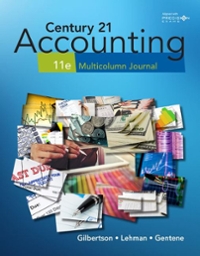Question
QUESTION St. Ashton Resorts provides high-end, all-inclusive holiday resorts in 12 locales, including Maui, Hawaii, Los Cabos, Mexico, and Australia's Great Barrier Reef. The guest
QUESTION
St. Ashton Resorts provides high-end, all-inclusive holiday resorts in 12 locales, including Maui, Hawaii, Los Cabos, Mexico, and Australia's Great Barrier Reef. The guest pays a set daily charge that covers housing, all meals and beverages, golf, and spa treatments at St. Ashton hotels.
Each resort is viewed as a profit center, and resort managers are rewarded for meeting or exceeding the budget. Each resort management team is compensated based on the difference between budgeted and actual earnings under the profit center concept.
St. Ashton changed its budgeting system last year. Previously, each property's yearly budget was created by St. Ashton's CFO's office based on estimated occupancy rates and expected costs. The annual budget was then divided into monthly budgets that were adjusted for the number of days in each month as well as any seasonal variations in the occupancy rate.
The new CFO, who was appointed in the middle of last year, though that the previous budget strategy, which was determined before the year began, did not account for the dynamic character of the tourist business. Travelers used to plan their vacations 6-9 months in advance, allowing resorts to produce relatively accurate demand projections and, as a result, realistic budgets. Demand has grown more unpredictable as a result of the Internet and worldwide marketplaces. The previous budget was out of date shortly after the new year began, generating tremendous disquiet among managers who were awarded under the budget.
For the current fiscal year, the new CFO modified the budgeting approach to a monthly rolling model. The CFO's office establishes expenditure objectives per guest room filled for each department at each resort (lodging, food and beverage, golf, and spa) as well as annual budgets to cover each department's fixed costs before the current fiscal year begins. Annual departmental budgets are converted to monthly budgets by dividing them by 365 and multiplying the result by the number of days in the month. The revised budget model for the St. Ashton Maui Resort for the current year is shown in the table below.
BUDGET
| Revenue per room day | $1,700 | |
| Number of rooms | 500 | |
| Average occupancy rate | 75% | |
| Expected occupancy | 375 | |
| Total expected revenue per day | $637,500 | |
| Variable costs per room Food and beverage | $300 | |
| Golf | $30 | |
| Spa | $200 | |
| Lodging | $70 | |
| Total variable cost per room day | $600 | |
| Total expected variable cost @ average occupancy | $225,000 | |
| Fixed cost per year Food and beverage | $18,000,000 | |
| Golf | $2,300,000 | |
| Spa | $1,600,000 | |
| Lodging | $88,000,000 | |
| Administration | $14,000,000 | |
| Grounds | $1,700,000 | |
| Total annual fixed cost | $125,600,000 | |
| Total annual fixed cost per day (365 days) | $344,110 | |
| Total profit per day | $68,390 |
Actual results for October
Guest days 10,540
Revenue $17,918,000
| Variable costs Food and beverage | $ 3,035,520 |
| Golf | 305,660 |
| Spa | 2,002,600 |
| Lodging | 685,100 |
| Total variable costs | $ 6,028,880 |
| Fixed costs Food and beverage | $ 1,421,753 |
| Golf | 175,808 |
| Spa | 119,583 |
| Lodging | 7,175,013 |
| Administration | 1,212,821 |
| Grounds | 135,720 |
| Total fixed cost | $10,240,701 |
1. Name the issues that appear in the exercise
2. Prepare the St. Ashton Maui Resort monthly budget for October (with 31 days) for the current
year before the current year begins.
3. Was the new CFO right in changing the fixed budget into a rolling budget? Why or why not?
4. "To evaluate and reward the performance of the St. Ashton Maui managers under the new
budget model, St. Ashton uses the actual number of guest days in the month, the budgeted
variable costs per room, and budgeted fixed costs to establish what the target expenses for
the month should have been. This is then compared to the actual expenses incurred. Managerial
bonuses are paid based on the difference between the target and the actual expenses."
a. What decision is rights (that is, what type of autonomy) does the new budget model imply in this scenario?
b. Is that an advantage or a disadvantage for the organization as a whole? Justify your answer.
Step by Step Solution
There are 3 Steps involved in it
Step: 1

Get Instant Access to Expert-Tailored Solutions
See step-by-step solutions with expert insights and AI powered tools for academic success
Step: 2

Step: 3

Ace Your Homework with AI
Get the answers you need in no time with our AI-driven, step-by-step assistance
Get Started


